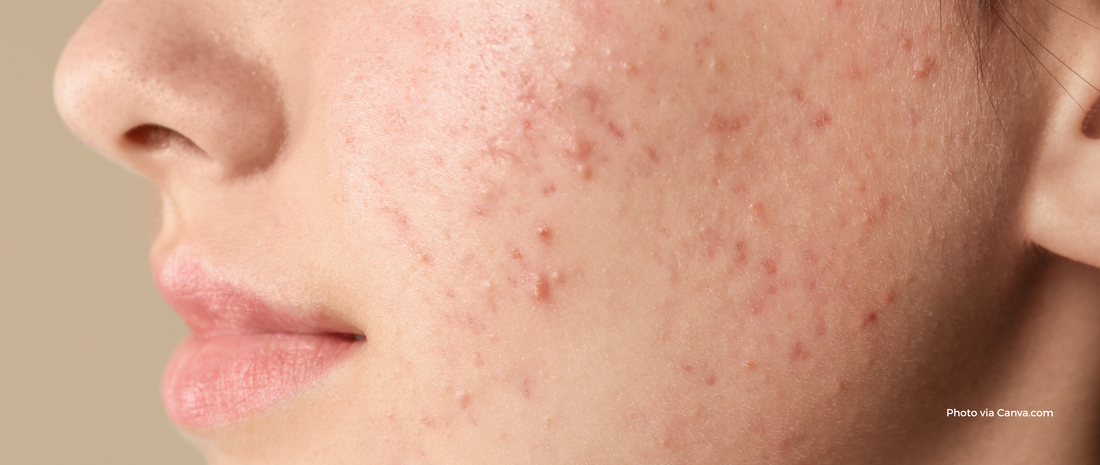If you're dealing with breakouts, you're not alone. Acne is the most common skin condition in the world — and the good news is, there are proven ways to treat it. This complete acne skincare routine breaks down the causes of acne, the best ingredients, and tips to help you achieve clear, glowing skin.
🧪 What Causes Acne?
Before building your acne skincare routine, it’s important to understand what causes acne. The main causes include:
| Excess oil (sebum) production | Clogged pores from dead skin cells |
| Bacteria (like P. acnes) | Hormonal changes (puberty, periods, stress) |
| Inflammation |
Knowing the cause of your acne helps you choose the right acne treatment products.
🔍 Types of Acne (And How to Identify Yours)
There are several types of acne, and each one may need a slightly different approach:
| Whiteheads | Small, closed clogged pores |
 |
| Blackheads | Open clogged pores (oxidized) |
 |
| Papules | Small, red bumps |
 |
| Pustules | Pimples with pus |
 |
| Nodules/Cysts | Deep, painful, inflamed lumps |
 |
👉 Pro Tip: If you’re dealing with painful or cystic acne, it’s best to see a dermatologist early.
🧼 Acne Skincare Routine (Morning + Night)
Here's a simple daily skincare routine for acne-prone skin that’s both effective and dermatologist-approved.
🌞 Morning Routine |
🌙 Night Routine |
| 1. Cleanser: Use a gentle, salicylic acid cleanser | 1. Cleanser: Cleanse again (double cleanse if wearing makeup) |
| 2. Serum: Apply niacinamide or azelaic acid serum | 2. Treatment: Apply a retinoid (like adapalene 0.1%) |
| 3. Moisturizer: Lightweight, oil-free, non-comedogenic | 3. Moisturizer: Use a calming moisturizer with ceramides or hyaluronic acid |
| 4. Sunscreen: SPF 30+ (crucial for acne and hyperpigmentation) |
🔬 Best Ingredients for Acne Treatment
Include these science-backed ingredients in your skincare routine for better results:
| Salicylic Acid | Exfoliates deep in the pores |
| Benzoyl Peroxide | Kills acne-causing bacteria |
| Retinoids | Prevents clogged pores & promotes skin renewal |
| Niacinamide | Reduces oil and redness |
| Azelaic Acid | Helps with acne & dark spots |
| Clay | Absorbs oil and clears pores (use as a mask 1–2x/week) |
Did you know? Cover Dot can be used after any of the treatments above.
If you’re dealing with active, surface pimples, consider adding Cover Dot Acne Care to your spot-treatment step. These medical-grade hydrocolloid patches protect the pimple from picking, absorb fluid, reduce inflammation, and create a clean environment for faster healing — making them perfect to use after cleansing and before moisturizer or at night. Use on closed or pus-headed pimples for best results and use after drying.
⚠️ What to Avoid in Acne Skincare
Avoiding the wrong products is just as important as using the right ones:
| ❌ Harsh scrubs | ❌ Alcohol-based toners | ❌ Over-cleansing |
|
❌ Fragrance-heavy products |
❌ Picking or popping pimples |
🧠 Common Acne Myths (Debunked)
|
Myth: Only teenagers get acne |
➤ Truth: Adult acne is very common, especially among women. |
|
Myth: Acne is caused by dirty skin |
➤ Truth: Acne is not about hygiene — it's hormonal, bacterial, and genetic. |
|
Myth: Tanning helps clear acne |
➤ Truth: UV damage can worsen inflammation and cause long-term skin damage. |
👨⚕️ When to See a Dermatologist for Acne
You should consult a dermatologist if:
|
📝 Final Thoughts: Be Consistent, Be Kind
There is no one-size-fits-all acne treatment, but with the right routine, ingredients, and consistency, clear skin is achievable. Be patient — it can take 4–12 weeks to see noticeable results.
